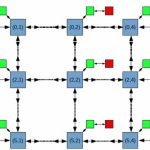ARM’s Cortex-M4 processor core represented quite a breakthrough in digital signal controller technology when launched in 2010. Adding a single-cycle multiplier and SIMD instructions enabled basic DSP algorithms while retaining the low power benefits of an MCU. New technology circa 2016 – embedded programmable logic – can… Read More
Author: Don Dingee
Adding DSP hardware shrinks energy for MCU core
Case study illustrates 171x speed up using SCE-MI
As SoC design size and complexity increases, simulation alone falls farther and farther behind, even with massive cloud farms of compute resources. Hardware acceleration of simulation is becoming a must-have for many teams, but means more than just providing emulation… Read More
Targeting Cat-NB1 instructions delivers power savings
If one wireless IoT technology fit every possible use case, we would have one specification. Many tradeoffs – battery life, mobility, indoor coverage, licensed versus unlicensed spectrum, and more – have made for many potential solutions. A heated discussion right now is over the future of LPWAN technologies, with LoRA, SIGFOX,… Read More
One line of macOS code could cap a 20-year pivot
When Steve Jobs made it clear at the 1997 Apple Worldwide Developer Conference he was taking back his company, he tossed the now famous line in his opening monologue: “Focusing is about saying no.” Approaching 20 years later, that decision still reverberates.… Read More
Of distant dreams and violent delights
Another report today of a Samsung Galaxy Note 7 catching fire, this time an allegedly refurbished unit, takes us back to the turning point in Samsung mobile phone history. It’s not the first time a defective Samsung phone – or a pile of thousands of them – has been on fire.
Samsung Chairman Lee Kun-Hee issued a powerful edict to his mobile… Read More
SiFive execs share ideas on their RISC-V strategy
Since its formation just last year, SiFive has been riding the RISC-V rocket from purely academic interest to first commercialization. In an exclusive discussion, I talked with CEO Stefan Dyckerhoff and VP of Product and Business Development Jack Kang about their progress so far and what may be coming next.
Previously, I covered… Read More
CCIX shows up in ARM CMN-600 interconnect
All the hubbub about FPGA-accelerated servers prompts a big question about cache coherency. Performance gains from external acceleration hardware can be wiped out if the system CPU cluster is frequently taking hits from cache misses after data is worked on by an accelerator.
ARM’s latest third-generation CoreLink CMN-600 … Read More
Cadence DSPs float for efficiency in complex apps
Floating-point computation has been a staple of mainframe, minicomputer, supercomputer, workstation, and PC platforms for decades. Almost all modern microprocessor IP supports the IEEE 754 floating-point standard. Embedded design, for reasons of power and area and thereby cost, often eschews floating-point hardware… Read More
It’s a heterogeneous world and cache rules it now
Cache evolved when the world was all about homogeneous processing and slow and expensive shared memory. Now, compute is just part of the problem – devices need to handle display, connectivity, storage, and other tasks, all at the same time. Different, heterogeneous cores handle different workflows in the modern SoC, and the burden… Read More
Making photonic design more straightforward
The arrival of optical computing has been predicted every year for the last fifteen years. As with any other technology backed by prolific research, lofty goals get dialed back as problems are identified. What emerges first is a set of use cases where the technology fits with practical, realizable implementations.
When it comes… Read More











Jensen Huang Drops Donald Trump Truth Bomb on Joe Rogan Podcast